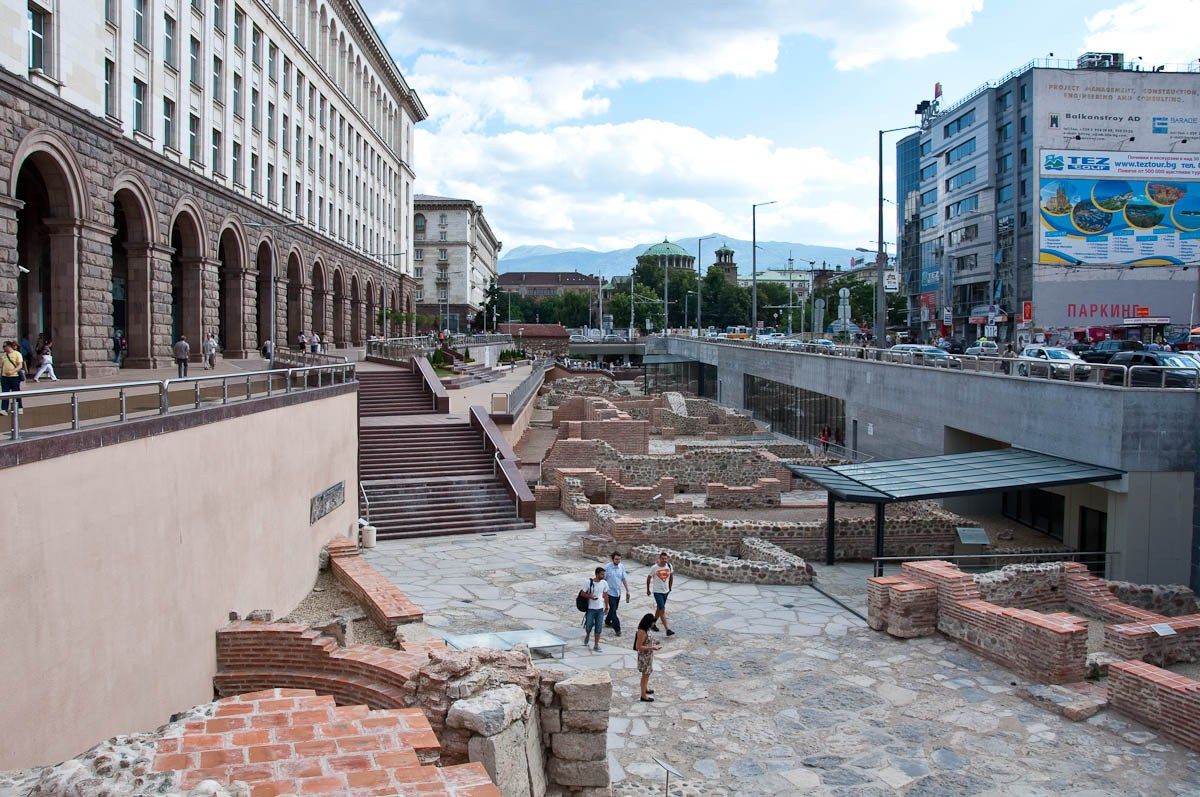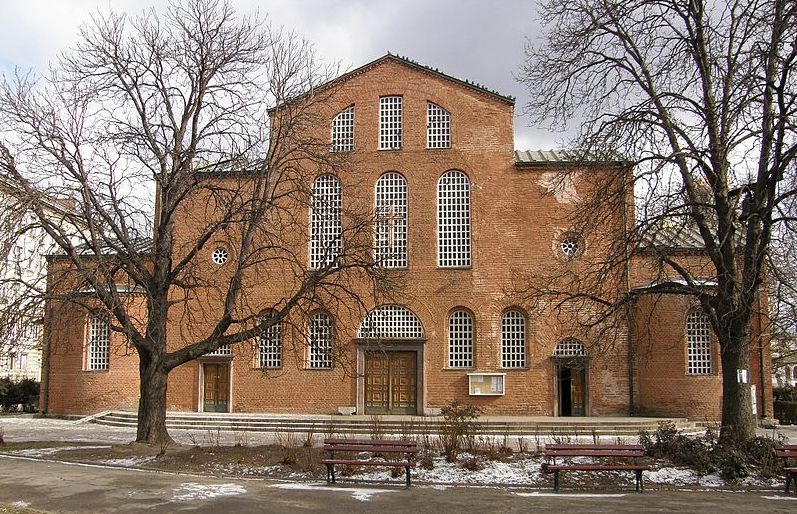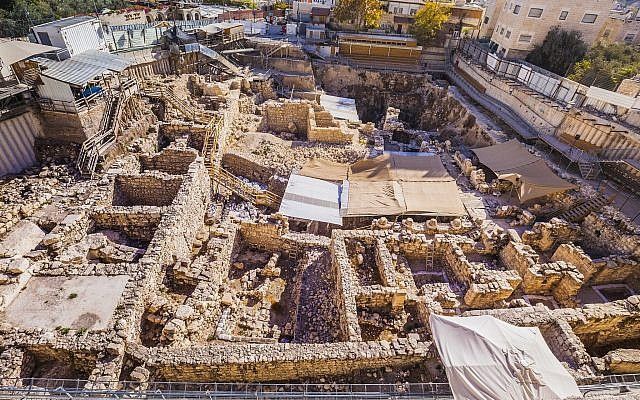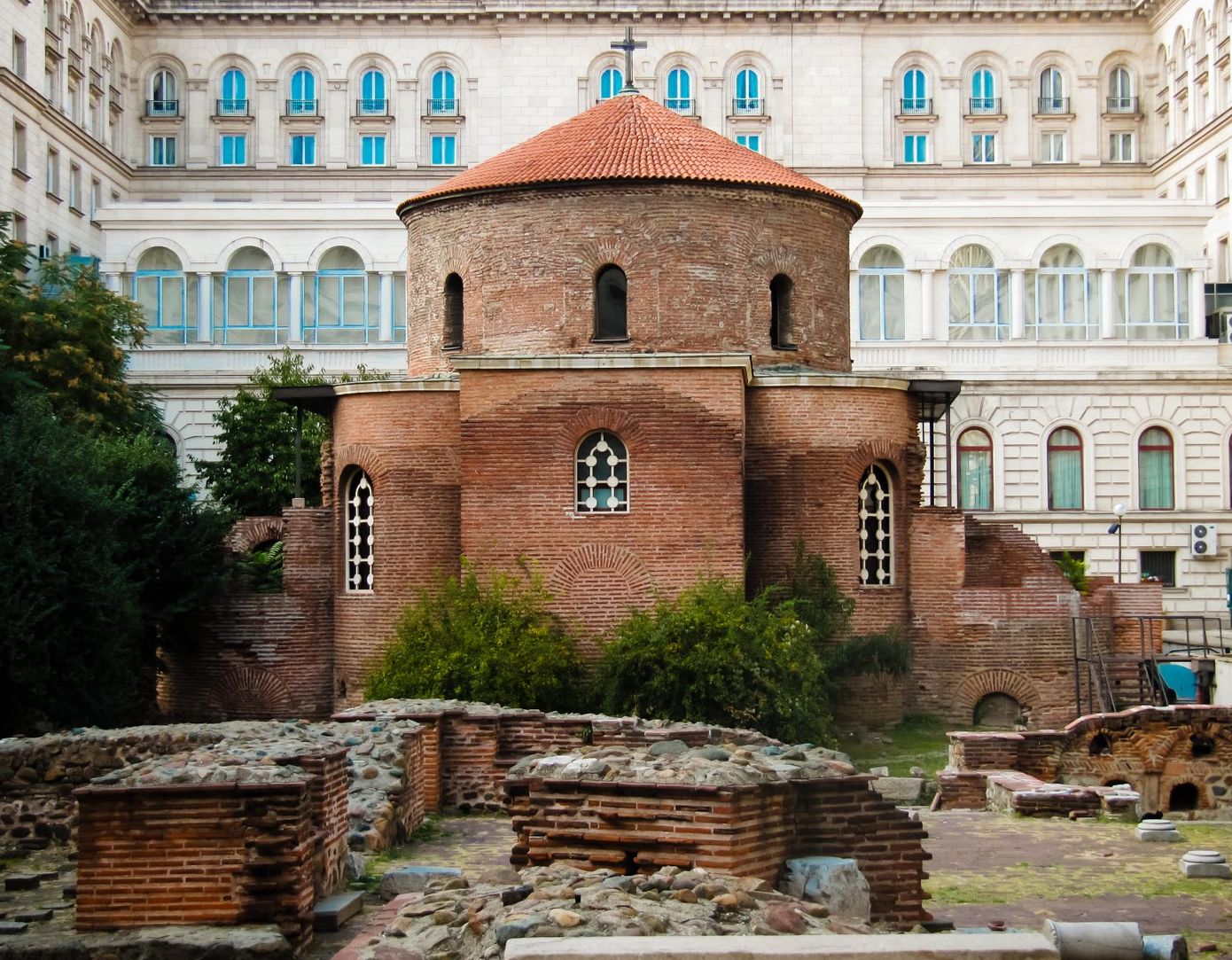VarSITI Closing Symposium
June 10÷14, 2019, Sofia, Bulgaria
Meeting place
Sofia city
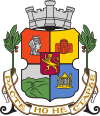 Coat of arms
Coat of arms
Sofia is Bulgaria’s capital and its largest city. Founded thousands of years ago, today the city continues to develop as the country’s cultural and economic center. At present, the city has a population of 1,250,000.
Sofia is located in the western part of the country, on the lower slopes of Mount Vitosha. The city’s average altitude is 550 meters above sea level, the climate is moderate and continental.
The city is located at a strategic crossroads. The route from Western Europe to Istanbul passes through Sofia via Beograd and Skopje. Sofia also connects The Near East and The Middle East.
Sofia has been an area of human habitation since at least 7000 BC. In honor of its hot springs, in the 8th century BCE the Thracian tribes settled here gave the city its first name – Serdika or Serdonpolis. In the 1st century BCE, Serdika was captured by the Romans, who transformed it into a Roman city. During the reign of Emperor Marcus Ulpius Trajan (reign 98-117 CE), the city took his name, Ulpia Serdika, and became the administrative center of the region. Serdika was the favorite city of Constantine the Great (reign 306-337), who said “Serdika is my Rome.” In roughly 175, massive fortified walls, with four watchtowers were built to protect the city , and a second outer fortified wall was added during the 5th-6th centuries. The city’s flourished for a second time under Justinian the Great (reign 527-565). At the beginning of the 9th century, the Bulgarian Han Krum (reign 803-814) invaded Serdika. The city became an inseparable part of The First Bulgarian Empire (7th-9th centuries) under Han Omurtag (reign 814-831). At this time the city was renamed Sredets (The Center), because of its central strategic location. From 1018-1094, Sredets was under Byzantine rule, but still remained an important strategic, economic, and cultural center. During the time of The Second Bulgarian Empire (1185-1393), Sredets took on the appearance of a large Medieval city – its narrow, crowded streets witnessed the construction of more and more small churches and monasteries, which later became Sofia’s Holy Mountain. The city gained its present name at the end of the 14th century, in honor of the city’s major symbol, The Hagia Sofia Basilica.
In 1382, the city fell to the Ottomans. It was liberated five centuries later, in 1878, and on April 3, 1879 it was declared the capital of the newly-liberated Bulgarian nation.
Sofia preserves many valuable monuments to its long and storied past. Visitors exploring the city’s streets can see remnants of The Eastern Gate from the days when Sofia was Serdika and Sredets, dating from the 2nd-4th centuries CE. These remains are exhibited in the underpass connecting the Presidential Palace and The Ministerial Council.
The Saint Sofia Basilica, founded during the reign of Justinian (reign 527-565), is one of the oldest churches in the capital. It was the city’s major church during the Middle Ages, and under the Ottomans it was used as a mosque. Very close to Saint Sofia is The Memorial Church Saint Alexander Nevsky, now one of the city’s most recognizable symbols. This church was built in 1912. Its bell tower rises to a height of 53 meters, and houses 53 bells, the heaviest weighing 10 tons. One of the most popular tourist destinations in Sofia, the church can hold roughly 5,000 people, and on important Christian holidays it is filled with believers. In the church’s crypt, there is an exhibit of Orthodox Christian art.
Directly across from the church is The National Gallery of Art, which often exhibits works by world-famous artists.
The oldest church in Sofia is the Saint George Rotunda. It is thought that the church was built in the 6th century, during the reign of Constantine the Great. In the rotunda’s immediate proximity, in the underpass leading to the Serdika metro station, is The Saint Petka Samardzhiyska Church, built in the 11th century. Another Christian monument in the region is the Saint Joseph Catholic Cathedral. While walking in the area, visitors will also see the Banya Bashi Mosque, built in the 16th century. Not far from the mosque is a synagogue, which houses a museum. There is hardly another city in all of Europe that has so many noteworthy Christian, Islamic, and Jewish monuments so close together. See a Google map at the "Venue" page
In the immediate vicinity, other historical remains are preserved, such as the municipal baths, the marketplace, and The Holy Sunday Church. Adjacent to this church is the Theological Seminary, which houses The National Historical and Archeological Museum. Other points of interest in the city include The Lion Bridge, The Eagle Bridge, and the monument to Vasil Levski (a Bulgarian revolutionary hero who gave has life in the struggle to free Bulgaria from the Ottomans in the 19th century).
On the lower slopes of Mount Vitosha, in the Boyana District, is located The National Museum of History, with its collection from prehistoric times to the present day. The museum has one of the largest collections anywhere, with over 700,000 items of cultural importance. Close to the museum is The Boyana Church, one of the Bulgarian monuments that is listed among the UNESCO World Heritage sites.
Sofia is also home to Bulgaria’s most prestigious and larges educational institutions – universities, colleges, and middle schools that offer up-to-date instruction in such disciplines as Architecture, Medicine, The Humanities, Engineering, Music and Choreography, and Fine Arts.
Near Sofia, in the Vitosha, Lozen, and Stara Planina (Central Balkan) Mountains, over the centuries so many monasteries have been founded that they came to be known as Sofia’s Holy Mountains. They can be considered as a single complex, and played an important role in preserving the Bulgarian spiritual heritage during the centuries of Ottoman occupation.
Sofia’s parks are a favorite place for rest and recreation. Borisov Park is right in the center of the city, and South Park is next to the National Palace of Culture.
The city’s annual celebration is observed on September 17, in honor of the martyrdom of Saint Sofia and her three daughters Vyara (Faith), Nadezhda (Hope), and Lyubov (Love).
See also https://en.wikipedia.org/wiki/Sofia
